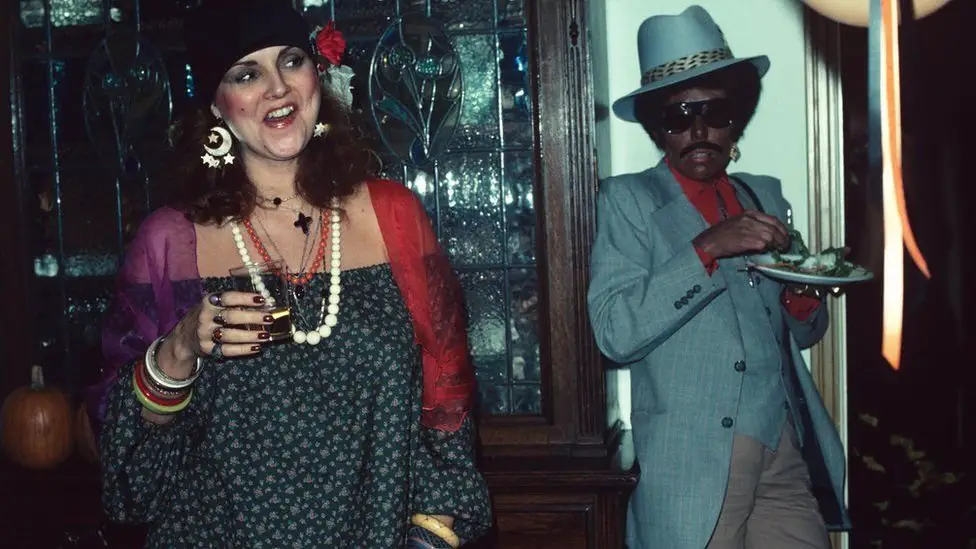Undoubtedly, Joni Mitchell is a legend. One of the greatest singer-songwriters of all time, Mitchell contributed to the folk boom of the 1960s, broke free from the genre in the 1970s to pursue her unique preferences, and kept changing through the years. She gave up her fame in the music business and made an impressive comeback in more recent times, accepting her indisputable place among the greatest musicians of all time. However, Joni Mitchell is not perfect, just like any other person.
The folk music culture of Laurel Canyon in the late 1960s and early 1970s will always be connected to Joni Mitchell. The scene was a mainstay of the beatnik subculture that was popular in mostly white California; prominent supporters included Buffalo Springfield, The Mamas & the Papas, Carole King, and The Byrds. However, Mitchell’s career who recently turned 80 was greatly influenced by jazz and soul music, which is overlooked in this classification. Indeed, one of the most overlooked yet crucial aspects of Mitchell’s decades in the public eye has been her engagement with black music.
On the cover of her expansive 1977 album Don Juan’s Reckless Daughter, Mitchell defied good taste by dressing in blackface, a decision that would be roundly mocked and denounced in contemporary society. Mitchell adopted the persona of “Art Nouveau,” a hipster figure who merged some of the most traditional aspects of 1970s black culture, such as a pimp suit and gold jewelry, and donned an afro wig.
Mitchell recalled in David Yaffe’s biography Reckless Daughter, “There were a lot of people out on the street wearing wigs and paint and masks, and I was thinking ‘What can I do for a costume?'”
“Then a black guy walked by me with a New York diddybop kind of step, and he said in the most wonderful way, ‘Lookin’ good, sister, lookin’ gooood.’ His spirit was infectious and I thought, ‘I’ll go as him.'” Mitchell had created the character in 1976 during a Halloween party.
Yaffe made an effort to analyze the difficulties posed by Mitchell’s hasty and careless handling of race. Eventually, that inner black person emerged as Art Nouveau, with less-than-ideal outcomes.
At the time, Mitchell was seeing a black man, percussionist Don Alias, and she often credited Ray Charles, Miles Davis, and Charles Mingus, the latter of whom she would honor on the 1979 album Mingus as influences for her compositions. Mitchell probably didn’t recognize the extremely inappropriate minstrelry that her persona and attire suggested since she was thinking in that way.
Mitchell informed Yaffe, alluding to Jolson’s appearance in blackface in The Jazz Singer from 1927 as well as the charge made against the black singer who frequently wore blackface for feeding into harmful stereotypes.
“Al Jolson’s not a Stepin Fetchit, He’s a Jew in blackface, so he’s always getting the better end of the deal, kind of like Bugs Bunny. And I didn’t see anything derogatory. But the prejudice was enormous. When I did that, people thought it was a bro, and it wasn’t stereotypical, it was individual. Why I got away with it… I got the greatest reviews for [Don Juan’s Reckless Daughter] in black magazines. They saw the brother, they reviewed it, and they got it.”
Yaffe points out that he wasn’t sure how many black journalists or black journals had assessed Don Juan’s Reckless Daughter. He also draws attention to the fact that Mitchell’s blackface appearances have insulting overtones. “Joni’s provocation – a white woman dressed as a black male boss pimp – comes with historical baggage, much of which was unknown to her.”
Yaffe also mentions Greg Tate of Vibe and Chaka Khan as supporters of Mitchell’s blackface persona.
In Mitchell’s Shadows and Light concert film, Art Nouveau eventually returned for a fleeting cameo in the last verse of the song “Furry Sings the Blues,” which is especially about the appropriation of black culture. In the 1982 short film “The Black Cat in the Black Mouse Socks,” Mitchell’s character attends a costume party in Nouveau’s role, marking Nouveau’s farewell performance.
You can watch some of the appearances in blackface down below.
Whoa! just found out that Canadian music legend Joni Mitchell wore/performed in black face to create an alter-ego named 'Art Noveau' for her 1977 album "Don Juans Reckless Daughter".I must track this record down&get Jonis whole artistic statement, but it is pretty shocking to see pic.twitter.com/mFdQrLs4Mf
— David Capper (@DOC604) June 11, 2020

